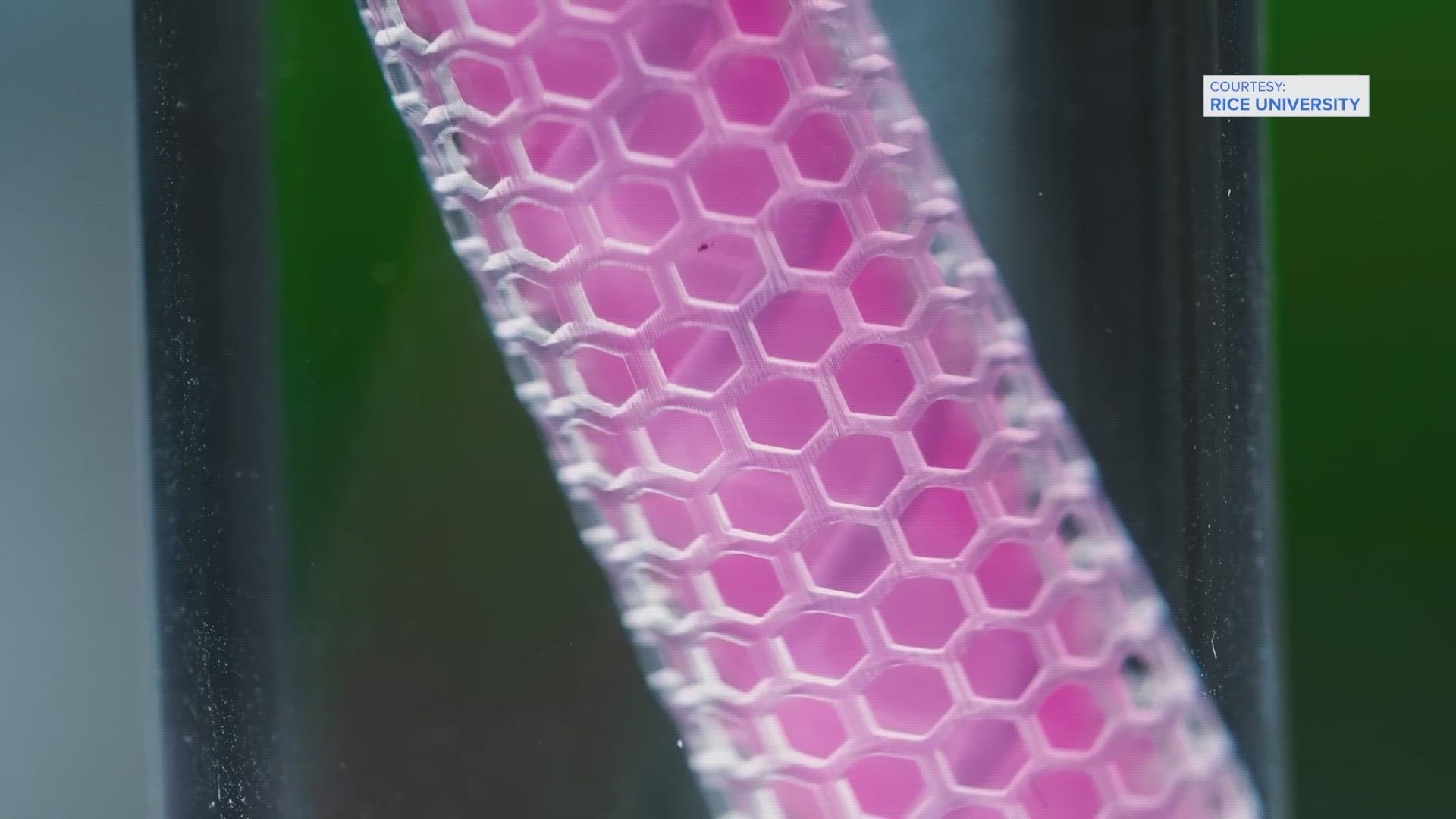HOUSTON — Rice University is leading a team that recently earned a $45 million federal grant to develop a ground-breaking cancer device.
The hope is that one day it could cut cancer deaths by an astonishing 50%.
In Texas, 130,000 new cancer cases are diagnosed and 42,000 people die from cancer each year.
The Rice University team is called THOR (targeted hybrid oncotherapeutic regulation) and the device is called HAMMR (hybrid advanced molecular manufacturing regulator).
HAMMR is an implanted device that serves as both a cancer detection system and a drug administration system.
Rice assistant professor of Bioengineering Omid Veiseh with a lab that bears his name and MD Anderson's Amir Jazaeri, MD and Vice Chair for Clinical Research and the Director of the Gynecologic Cancer Immunotherapy Program are two of the principal investigators of the THOR team which will work on HAMMR.
The implant device is about 3 inches long and carries sensors to monitor fast-mutating cancer cells.
"To get a real-time understanding of how our cancer cells are changing so we can change in parallel," Jazaeri said.
The abdominal implant would also be a drug factory with live human cells already produced in bio-manufacturing plants.
"We know they're safe. We know we can program them into whatever biologic we want, and yeah, they'll be grown in a factory and loaded into the device and when they reside in the abdomen they're alive -- meaning they get nutrients from your body like our other cells that exist and leverage that and turn it into the drugs," Vesieh said.
The THOR team is diverse. It's composed of about 20 labs, including Rice University, the University of Houston and MD Anderson. It's also got experts from material science to artificial intelligence to electrical engineering.
"This device will communicate wirelessly, potentially with a smartphone, and also be chargeable externally," Jazaeri said.
"Essentially how your iWatch charges today," Vesieh said.
It allows doctors to react to what's happening to the cancer a lot quicker than it takes to get test results, which could take months.
Possibly the most remarkable thing about HAMMR is that it should only be needed for about two months. The hope is that the cancer can be cured within 60 days.
"That's the hope. ... When immuno-therapy works, the results are really dramatic," Vesieh said. "The cancer doesn't come back because you've educated the immune system to fight that cancer."
It's the same idea behind implantable monitors and insulin pumps for diabetics.
The goal is to be in human trials within five years.

